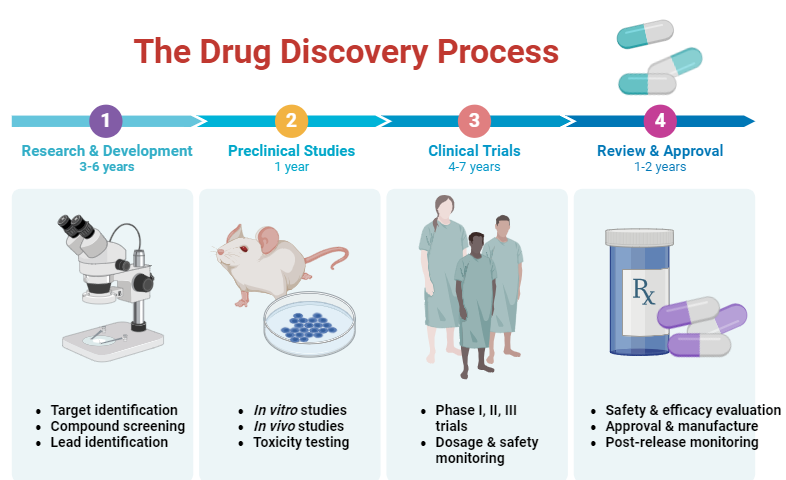Introduction:
The process of finding new drugs involves combining clinical, translational, experimental, and computational models. Drug design is the inventive approach that aims to design drugs whose target molecules may be receptor (45%), an enzyme (20% of cases), ion channel (5% of cases) DNA (2% of cases), nuclear receptor (2% of cases) or unknown (7% of cases). Moreover, knowledge of a biological target is also very crucial to develop highly efficient drugs, which have little or no side effects.
Steps:
- Detailed knowledge of small potent compounds that also include the 3-D structure which is very critical in order to target molecules of interest with high affinity.
- Designing of the drug molecules, which will specifically fit, possess affinity and bind to critical sites and synthesis of such molecules
- Evaluation of the interaction of the synthesized drugs with the target molecules, and further modification in the former to make them safe as medical use.
Procedure:
- Discovery and Development
- Preclinical and Clinical Research
- FDA Review and Regulatory Approval
- Post-Market Safety Monitoring

Fig: Drug Designing, procedure, process, and delivery
Drug Delivery and targeting:
Targeted drug delivery is a strategy that selectively and preferentially delivers the therapeutic agents to the target site that can greatly improve new therapies and release the active therapeutic agent.
Drugs are normally delivered either orally or parenterally (by injection) to the target site. They become distributed in the whole-body tissue and fluids, and only a portion reaches the disease’s tissue/organ.
This needs a considerably higher dose of expensive drugs and can frequently result in significant undesired side effects in other organs/tissues. Furthermore, for obvious reasons, oral medicine administration is far superior to injection.
However, this approach is inadequate for the new class of protein or peptide medications because to poor absorption caused by proteolytic destruction in the gastrointestinal tract and low intestinal mucosa permeability to these high molecular weight therapeutic agents.
- Peptide/protein drug may be delivered by ither routes e.g., nasal, buccal, rectal, ocular, pulmonary and vaginal routes; out of theses, the nasal route appears to be the most promising and choice of interest. Sodium glycocholate, dimethyl-beta-cyclodextrin, sodium deoxycholate are commonly used permeability enhancers. However, the prolonged used of such enhancers can causes change in the target site and there new, better, and novel enhancers are being developed.
- A large number of drugs can be encapsulated in liposomes and hold great promise as a DNA delivery system in gene therapy. Liposomes are small, spherical vesicles, and biocompatible that are made up of a phospholipid which mimics the structure of a cell membrane. However, they possess some limitations such as larger size and poor tissue or cell type selectivity.
- Polymers have been used as drug delivery systems; the drug is generally released by cleavage of the drug from the polymer, swelling of the polymer, through pores generated by osmotic pressure, or simple diffusion. The most effective system for site-directed delivery drugs and other moieties (called drug targeting) is based on monoclonal antibodies (Mabs).
